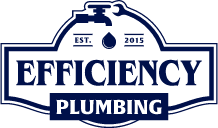In New England, there are multiple rebates for homeowners that increase their home’s energy efficiency. Not only will these rebates decrease your home’s overall carbon footprint, but higher energy efficiency always yields lower utility bills. The New England states that provide rebates specifically for energy-efficient cooling include:
- Connecticut
- Maine
- Massachusetts
- Rhode Island
- Vermont
While New Hampshire doesn’t explicitly have a rebate for heating and cooling, there is a rebate with up to $6,000 in potential savings for adding energy efficiency improvements to your home. For this reason, just about every state in New England has a system in place to make adding energy efficiency features to your home financially viable. With that in mind, some homeowners are unaware of the energy-efficient technologies available. In this guide, we’re going to walk you through six options that will make your New England home more carbon-neutral and energy-efficient.
High-Efficiency Air Conditioners
When purchasing a new air conditioner, you’ll notice that it will have a seasonal energy efficiency ratio (SEER) rating. This rating precisely measures how efficiently the air conditioner cools a home. The most energy-efficient option is an AC with a rating of 16 and up. To create a higher SEER rating, an energy-efficient air conditioner will use several technologies. These include the features listed below.
Enhanced Coils
Modern evaporator coils are more efficient than those in older models. Since many are larger, they enhance heat exchange and transfer, which reduces the overall energy required to cool the home.
Smart Functionality
Air conditioners benefit from home automation by being able to tap into Wi-Fi, Zigbee, Z-Wave, Thread, or BLE networks. With these technologies, you can:
- Preprogram the AC for the time of day
- Turn on the unit when you’re approaching home
- Set user habits
- Turn off the unit when you’re out of the room remotely
Also, with geofencing, which detects your location based on your smartphone’s presence, your AC can turn on and off as you move through your home. All of these technologies help homeowners save electricity, which in turn adds to the home’s energy efficiency.
Compressors With Variable Speeds
For more efficient everyday operation, AC units with variable-speed compressors adjust their speed based on the room’s or home’s cooling needs. AC units of previous generations would always push air out at full-scale output. With variable speed functionality, you’ll have better temperature control, and the unit will use less energy.
Ductless Mini-Split Systems
Just as the name indicates, ductless mini-split systems don’t use ducts to circulate air throughout your rooms. Instead, these HVAC systems, which a specialist mounts on a wall or ceiling, blow cool air into your home. Since these don’t use ducts, there’s a far reduced incidence of heat loss as air circulates throughout your home. With ducts, HVAC systems can waste up to 30% of energy during cooling seasons.
These systems also run quieter than traditional HVAC systems since they have no loud duct systems and use a zone-style of comfort. Effectively, each room has its own user-set climate so that residents are more comfortable. These are also much easier to install, and since they use zoning, they are more efficient than systems that cool a home’s rooms indiscriminately.
Heat Pumps
While the name might seem to indicate that a heat pump only brings in heat, the truth is that these systems are also great for cooling. This is because heat pumps either pump in heat when it’s needed or pump heat out so that your home is cooler. Both of these methods of heat transfer are far more efficient than any other cooling system that uses coils or refrigerants. For this reason, a heat pump can markedly reduce utility bills. In fact, a heat pump moves about four units of heat for every unit of electricity spent.
While this is similar to a high SEER AC’s output, it’s important to note that these also provide heating, which is useful in New England. When comparing heat pumps to most heating technologies, these devices are far more efficient.
Smart Thermostats
Like smart air conditioners, smart thermostats use several potential communication technologies to bring your home’s heating and cooling into the world of home automation. With a smart home-enabled thermostat, you can control it with your voice or through a smart application. Many thermostats with home automation functionality will even learn your schedule, allowing them to adjust heating and cooling systems so that they are more efficient and less wasteful.
Like smart air conditioners, smart thermostats can also use geofencing, so the system knows where you are and when to cool the home or room you’re in. They can even provide you with usage recommendations based on your daily patterns, helping you save money and energy.
Energy Recovery Ventilation Systems (ERVs)
ERV systems are transfer systems that manage both heat and moisture. These work in both heating and cooling seasons, offering numerous benefits in terms of overall energy efficiency. In cooler months, ERVs capture heat as air flows out of the home and reuse it to warm the air flowing inside. Then, in warmer months, ERVs capture cooler, drier air as it flows outside from the air conditioner and transfer this cool air to the air that’s flowing into the home.
Through this heat transfer methodology, ERV systems can save a household up to 70% in cooling costs. These also have the benefit of managing humidity, which is beneficial for New England homes that often experience humid summers. These systems work in conjunction with HVAC systems and can make their everyday operations much more efficient.
Heat Recovery Ventilation Systems (HRVs)
Like ERVs, HRVs operate based on the principle of heat transfer. The system pumps warm air from kitchens, bathrooms, or laundry rooms and pushes it outside, allowing air conditioners or heat pumps to cool internal areas more efficiently. This reduces the load on these two types of systems so that you save energy when cooling the household. Effectively, these benefits New England homes by reducing heat and adding better ventilation.
Since older New England homes often have poor insulation and air leaks, the enhanced circulation provided by an HRV helps cool the home using less energy. Since these homes weren’t built with modern ventilation needs in mind, an HRV serves to filter out allergens and pollutants while improving the performance of HVAC systems.
For Energy Efficiency, You Have Options
When you want to reduce your carbon footprint, you’ll find that multiple technologies can help you become more efficient. If you’re looking to improve your home’s energy efficiency, Efficiency Plumbing can help. We have more than 15 years of experience helping New England households with their heating and cooling needs in addition to providing indoor air quality solutions. Our technicians understand the technology at play and consistently demonstrate professionalism and reliability.
Give us a call today at Efficiency Plumbing, and we’ll set up a consultation to discuss energy-efficient cooling options, including ductless mini-split. We offer professional heating and cooling services to Hanover residents.




